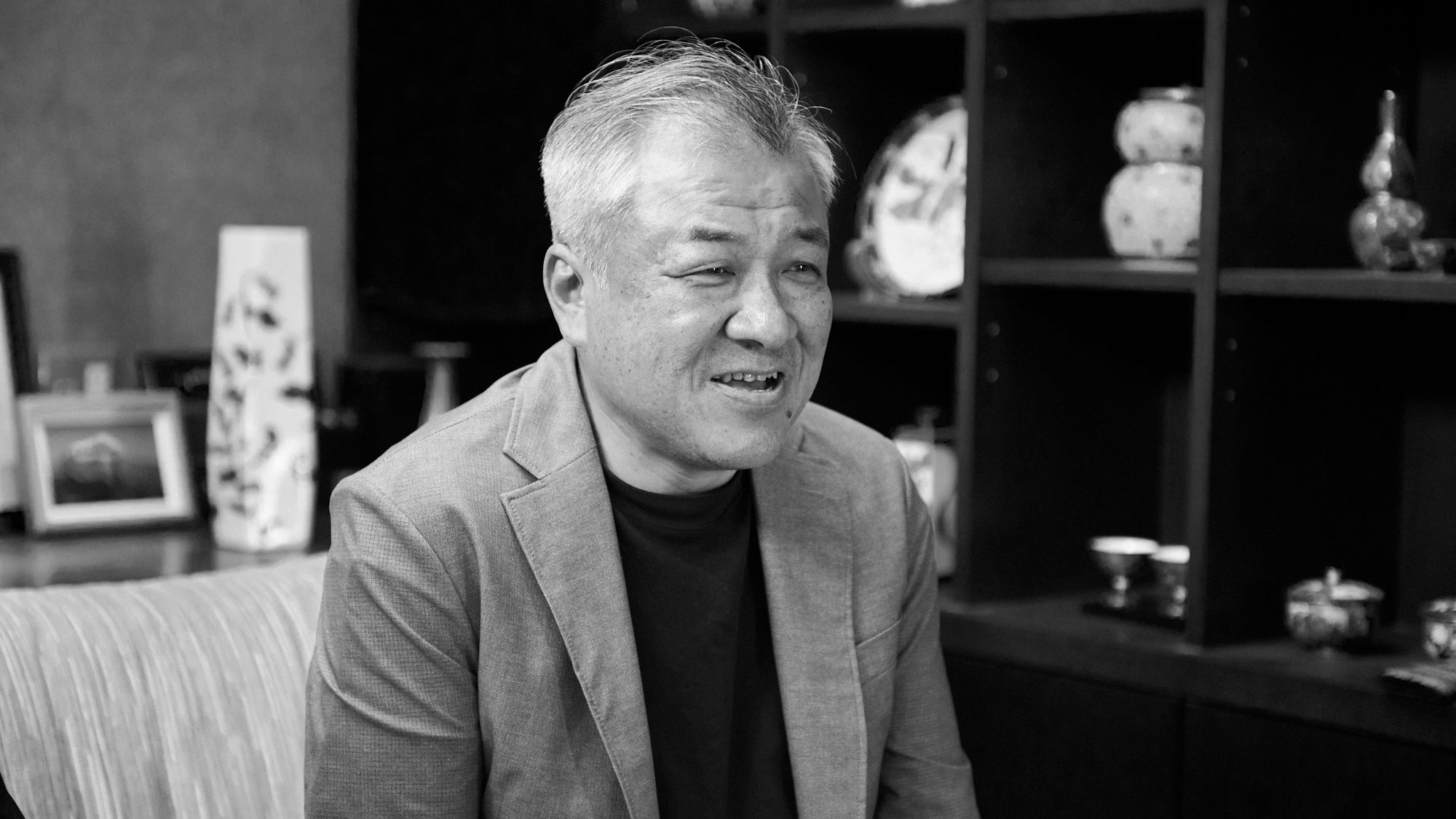
Taka Toshifumi: Bringing All Things Into Balance
Written by Team MUSUBI
The bold go-sai, five colors, of Kutani ware are instantly recognizable to anyone familiar with traditional Japanese artistry. The patterns and motifs that cover porcelain pieces have withstood the test of time to become representative of the industry. Yet, every artist who finds their calling in the Kutani genre finds a way to make it fully individual and keep the timeless craft evolving to meet the needs of the future.
One such artist is Taka Toshifumi.

We visited his workshop to speak with the artist and learn firsthand about his passion for the intricate art form, his story of being born into a family of Kutani mastery, and his vision for the future.
Table of Contents
Seeking Inspiration from the Past
Entering the kiln, the reception area is adorned with his creations alongside those of his father and grandfather, giving visitors an instant look into the third generation’s formidable heritage.

Despite being born into the world, it wasn’t until high school that he set his sights on continuing the family business. And a successful boom during Japan’s economic bubble led him to enroll at the Osaka University of Art to study molding—a course not directly related to the work of Kutani ware.
Following his university studies, he joined the path that had been laid out for him by the generations before him by entering the then-newly established Kutani Ceramic Training Institute. As the curriculum hadn’t been solidified yet, his learnings were mostly conceptual: “That way of thinking about art is still useful to me now.”


The History of Kutani, Expressed Through a Master’s Art
Shoza Painting

Setting the tone of Taka’s pieces is the vibrant, elaborate design that signifies shoza style. Originating in the Meiji period, this genre combines intricate overglaze painting in a rainbow of hues with opulent gold details.
At the beginning of his journey, the shoza designs he produced were copies of existing pieces. Now, he maintains shoza-style copies as the core of his pieces but fills the surrounding parts with his own designs. Shoza designs were cutting-edge during the Meiji period, but Taka believes that he and other Kutani craftsmen need to evolve to make the work suit contemporary style. As a result, although Kutani ware traditionally features patterns and designs covering the entire surface, Taka has shifted his style to include designs and colors that lighten the visual load.
Hanazume Design

Another aspect of the painting process was handed down to Taka from his grandfather: hanazume. A classic Kutani design, hanazume was invented in 1913 and depicts a dense arrangement of flowers, with each bud outlined with gold. Taking the first-generation master’s technique, Taka has made it his own with an untraditional color palette. In the past, dark, rich colors were favored for hanazume, but his style has evolved to include white in unique ways, creating pastel hues not commonly seen in Kutani ware.
The flowers used on the design lean abstract over realistic. Although the artist says that he sketches, he mentioned that he deliberately avoids realism, explaining: "If I simply fill the space with flowers, it becomes nothing more than a flower field. I stylize the design to express that it's Kutani ware."
Kinsai Touches

He uses gold to enhance or even correct parts of the painting as it happens. “It’s the kind of thing you think about at each stage of the work. The final result isn’t decided from the beginning.” When placing gold, Taka says, it is necessary to carefully consider its distribution: too much and it feels overwhelming, even gaudy.
The Creative’s Balancing Act


This can be seen in the motif known as The Seven Lucky Gods. Seen on Kousai Kiln pieces since the first generation, these figurines vary in facial expression depending on the artist. Now, when the third generation paints the faces on these figures, he always strives to make them beautiful.

And although he’s renowned for the beautiful, hand-painted designs that cover the pieces, something that sets him apart from other artists is his attention to the form. He considers the experience the user will have—a concept that stems from his university course in molding and the 10 years’ experience in molding that came after graduation. Because his pieces are not only painted, but also shaped by hand, they represent an inimitable passion for the work from concept to final result.
And with that passion, Taka Toshifumi is shaping the future of Kutani ware.


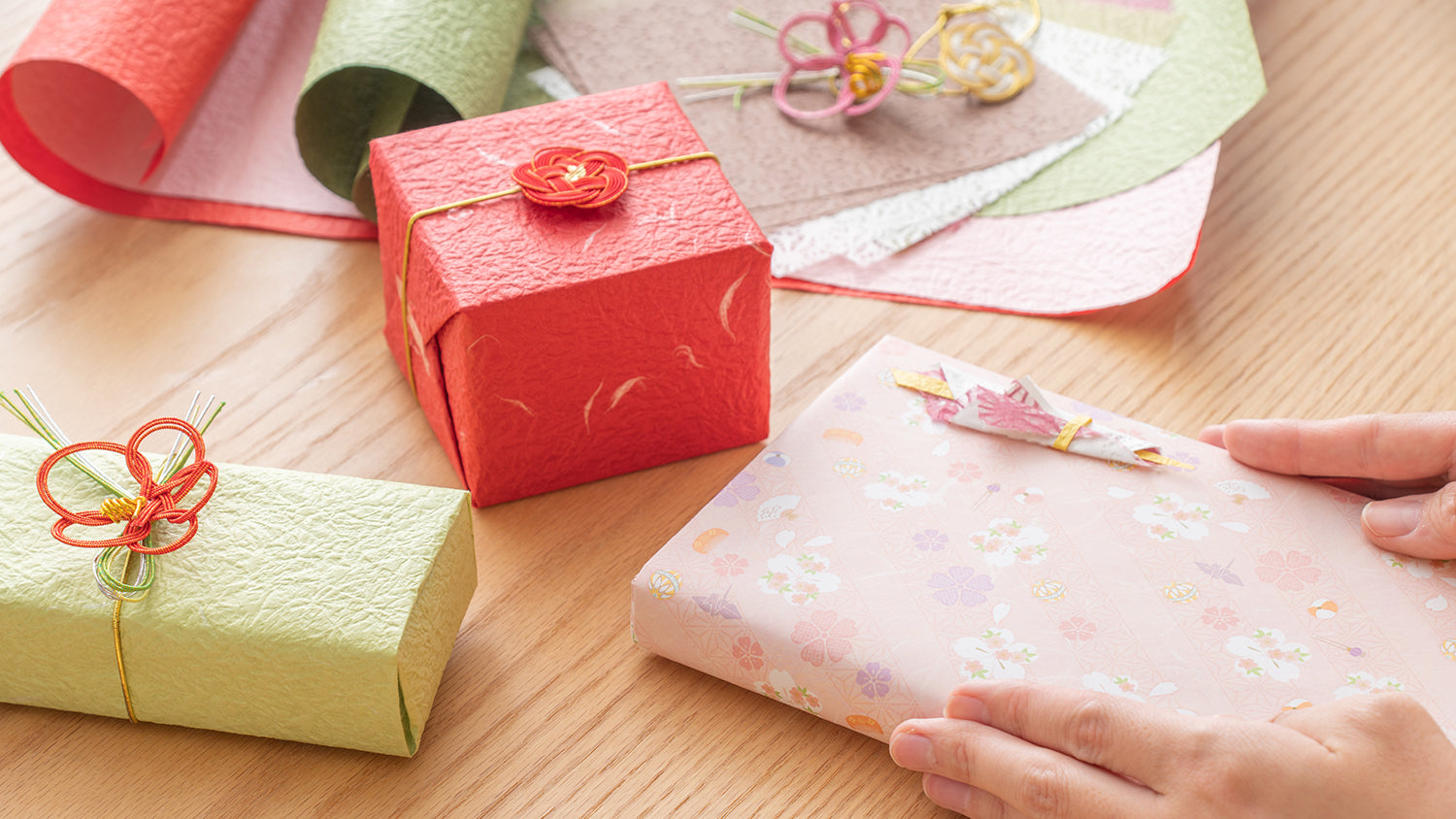
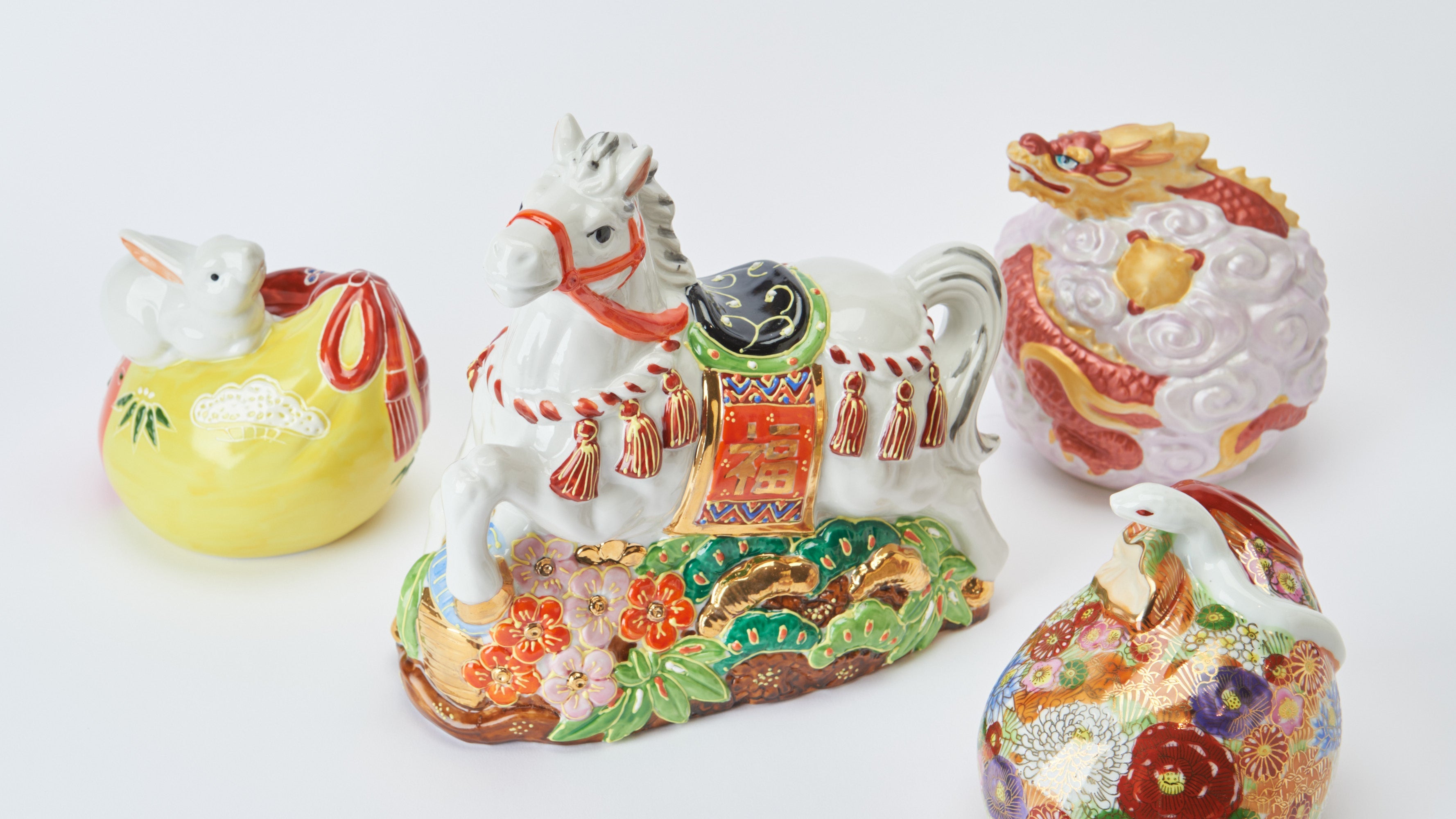
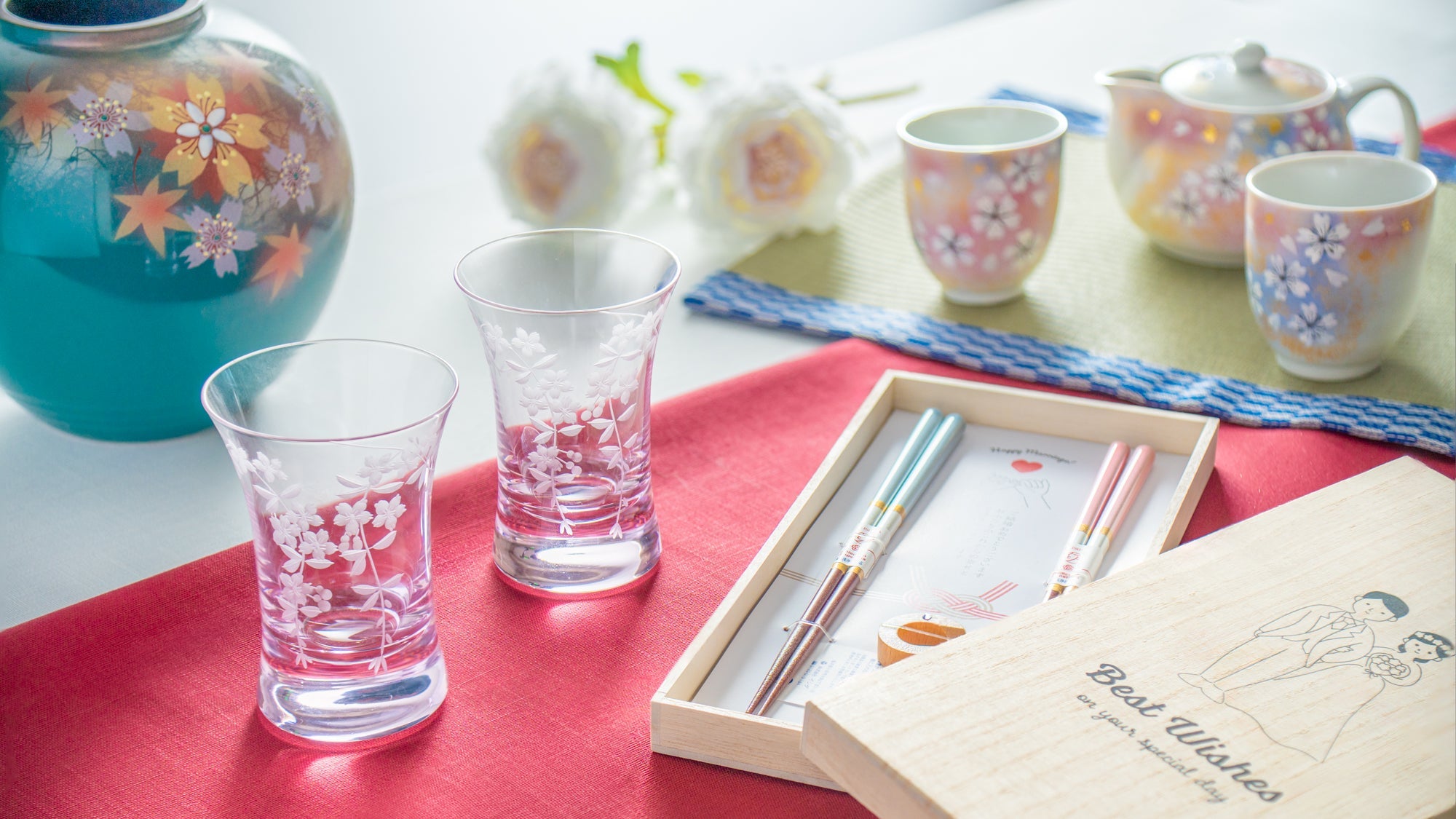

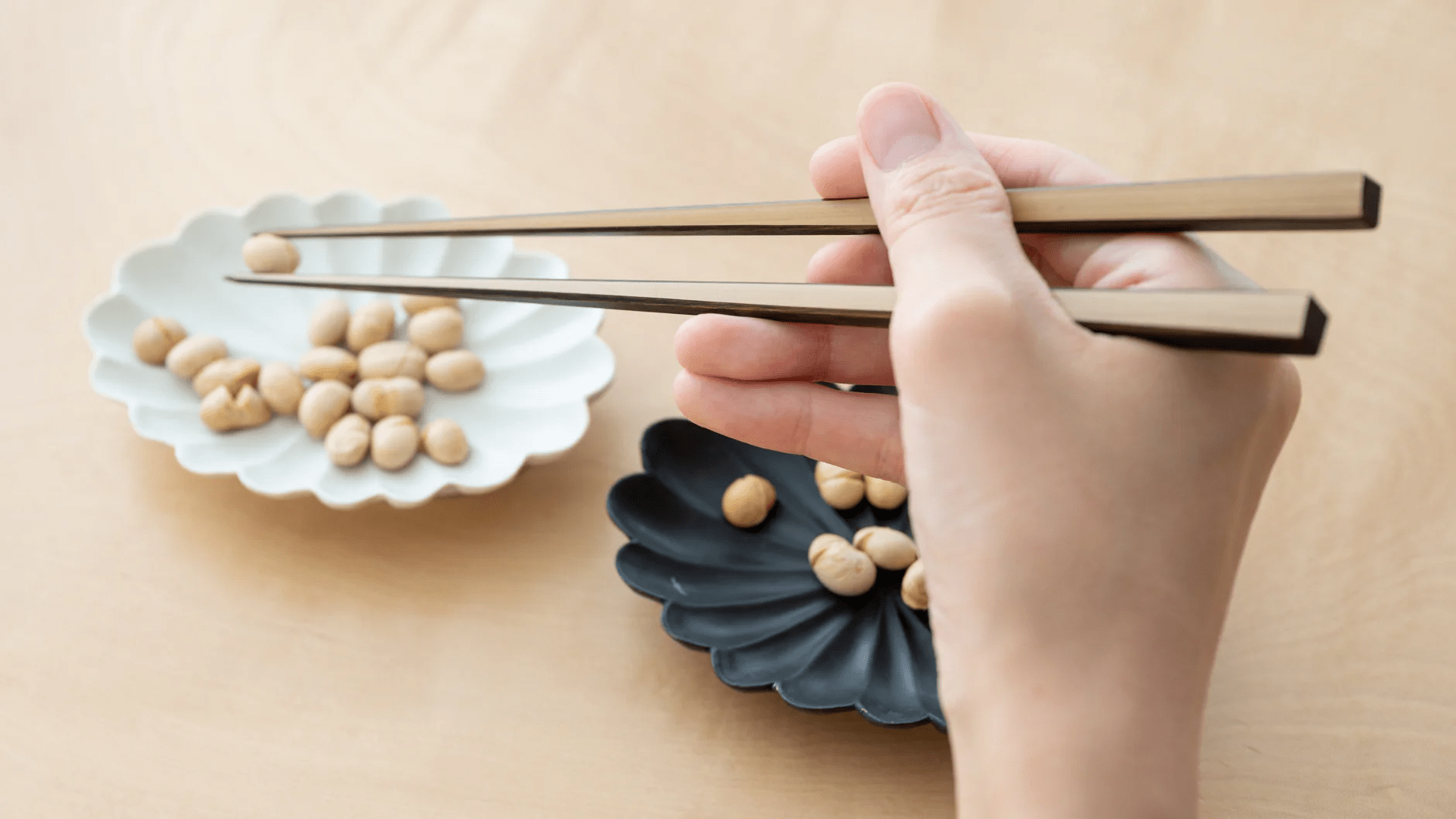
Leave a comment
This site is protected by hCaptcha and the hCaptcha Privacy Policy and Terms of Service apply.